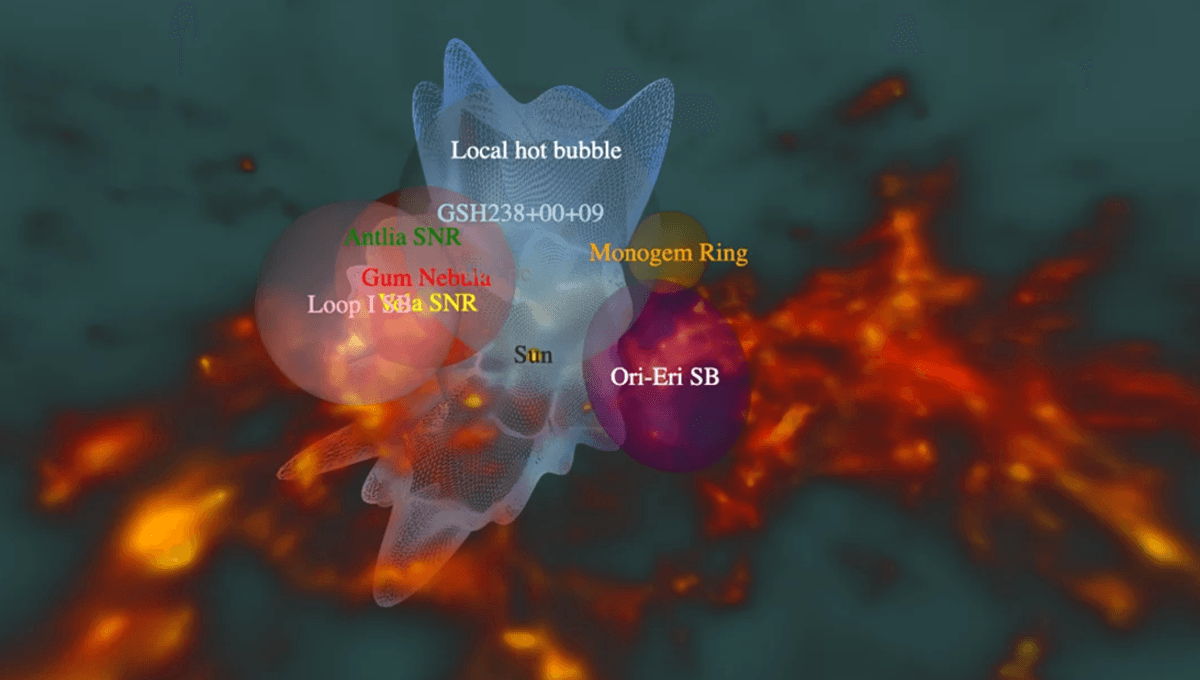
A team of astronomers using data from the eROSITA All-Sky Survey has modeled the hot gas in our local stellar neighborhood, finding a curious “interstellar tunnel” towards the constellation of Centaurus. The “tunnel” potentially connects our own local bubble to a neighboring superbubble.
Our Solar System resides in a 1,000-light-year-wide “Local Bubble“, sometimes called the “Local Hot Bubble” (LHB), an idea first proposed around half a century ago. This “bubble” is a region a lot less dense than typical interstellar space, with 0.001 particles per cubic centimeter compared to the typical 0.1 particles per cubic centimeter in our local cloud.
We haven’t always been inside the bubble, and it’s possible that traversing other densities of space could have had profound impacts on our climate in the astronomical past. So it’s probably best to take a good look at the local environment we will be calling home for the next 10-20 million years or so.
This has taken place in recent years, with proposals for how this region seemingly devoid of neutral gas formed in the first place.
“There is a growing number of studies that support a formation scenario where dozens of supernova explosions create and sustain the LHB, employing a combination of star cluster traceback, numerical simulations, and matching supernova-produced radioisotopes found in Earth’s crust,” the team explains in the paper.
Using data from the eROSITA space telescope – a Russian and German project to map the universe in X-rays – a team led by scientists at the Max Planck Institute for Extraterrestrial Physics created the new model, which can be seen in an interactive version here. The team found a larger extent towards the galactic poles, as hot gas takes the path of least resistance, moving away from the galactic disc, something which had been found using data from other telescopes.
“This is not surprising, as was already found by the ROSAT survey,” Michael Freyberg, co-author of the paper, said in a statement. “What we didn’t know was the existence of an interstellar tunnel towards Centaurus, which carves a gap in the cooler interstellar medium (ISM). This region stands out in stark relief thanks to the much-improved sensitivity of eROSITA.”
The team believes that the data implies that the “tunnel” may be filled by hot plasma, and connect the local bubble to the Loop I superbubble. While intriguing, there is not a lot that we know about the tunnel yet. Complicating matters, views of the tunnel are tangled with another enormous structure above the center of the galaxy.
“The Centaurus tunnel region is located on the edge of the eROSITA bubbles, further complicating the spectral fitting,” the team writes in their paper. “A dedicated spectral analysis, with a tailored spectral extraction region, of this region will likely help disentangle the emission from the Loop I superbubble (its nature or existence has become unclear after the discovery of the eROSITA bubbles) from the eROSITA bubbles, in terms of spectral properties and distance.”
Further, ongoing study should reveal more.
The study is published in the journal Astronomy & Astrophysics.
Source Link: "Interstellar Tunnel" Found Towards The Constellation Of Centaurus By eROSITA Space Telescope